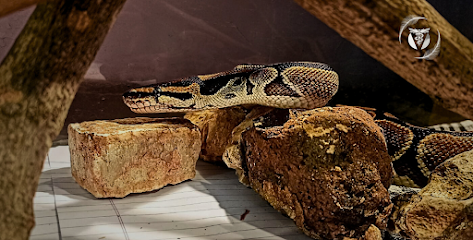Conure Care Guide: How to Survive and Thrive
Good news: while conures can be a lot to handle, they’re also incredibly rewarding companions when cared for properly. That’s why I put together this Conure Care Guide—to help you survive.
1. Embrace the Noise (and Train Smartly)
Your conure’s vocal cords come factory-installed with the volume permanently set at “stadium announcement.” Dawn and dusk? Expect opera. Hear a car honk? They’ll add backing vocals.
The trick isn’t to silence them (impossible) but to redirect the behaviour. Reward softer sounds with treats and praise, ignore attention-seeking squawks, and provide plenty of stimulation during noisy times of the day. Consistency is key—your bird will test your limits, but with patience, they can learn.
Pro tip: white noise machines can save your
sanity (and your neighbours).
2. Toys, Toys, and More Toys
 |
Conures are basically toddlers with feathers:
curious, destructive, and eternally busy. A bored conure is a conure plotting
chaos. Provide a rotation of chewable, shreddable, and foraging toys.
- Shredding
toys: paper, cardboard
- Foraging
toys: food puzzles, hidden treats
- Chew
toys: untreated wood, bird-safe ropes
Rotate toys weekly to keep things fresh - a toy
ignored today might be their new obsession next week.
3. Out-of-Cage Time is Non-Negotiable
These little dynamos need at least 3–4
hours outside the cage daily. Supervised, of course, because your phone
case, laptop keys, and houseplants are all fair game.
Create a “bird-safe zone” with play stands,
ladders, and perches to give them safe outlets for their energy. Remember, the
more positive outlets you provide, the less they’ll chew on your furniture.
(Well… maybe.)
Bird safe woods (enlisted in this article of mine - Cockatiel Care Guide) can be used for making perches or DIY toys.
4. Biting: Permanent Malligator Phase
Yes, conures bite. Sometimes out of fear,
sometimes out of loyalty, and sometimes just for fun. If your finger is their
chew toy, remember: yelling “ow!” only entertains them.
Instead:
- Stay
calm. Gently put them down without drama.
- Identify
triggers—new people, strange clothes, sudden changes.
- Work
on positive reinforcement training to redirect bites into acceptable
behaviour.
Over time, they’ll learn that hands bring
treats, scratches, and fun—not conflict.
5. The Mess Factor
Conures are expert food flingers. Expect seed
shells, fruit bits, and mystery crumbs to appear everywhere. Cage
liners, floor mats, and a handheld vacuum will become your best friends.
Daily spot-cleaning and weekly deep cleans are
essential—not just for your sanity, but to prevent harmful bacteria or fungal
growth that could sicken your bird.
6. Diet: More Than Just Seeds
 |
| ~ Papaya, dragonfruit, beans, corn and almonds ~ |
Feeding your conure only seeds is the avian
equivalent of giving a toddler a lifetime supply of French fries.
Aim for a balanced diet of fruit, veggies and
seeds and make sure to introduce seasonal variety without making the blend
monotonous. Consult your avian vet for diet specifics, because each bird’s
needs vary.
7. Health & Vet Care
Conures hide illness brilliantly (it’s a
survival instinct in all birds), so regular check-ups with an avian vet are
non-negotiable. Annual exams, bloodwork, and weight checks help catch problems
early.
Keep an eye out for:
- Fluffed-up
feathers and lethargy
- Reduced
appetite
- Changes
in droppings
- Excessive
plucking or self-mutilation
If you spot these signs, don’t wait—it’s vet
time.
8. Mental Stimulation = Happy Bird
Training is more than a party trick—it’s brain
food. Teach your conure simple commands (“step up,” “wave,” “turn around”), or
more advanced ones if you’re ambitious. It keeps their brain busy and
strengthens your bond. Daily sessions of 10 mins x 3 times a day should keep
your birds bonding time with you, while puzzle feeders, flight training (if
safe indoors), and interactive games keep them sharp and satisfied.
 |
| ~ Carrots are often a training treat - weird but true ~ |
9. Plan for the Long Haul
Your conure could be with you for 25–30 years.
That’s a bigger commitment than most relationships! Plan ahead:
- Have a
co-caregiver in case of emergencies.
- Consider
lifestyle changes (travel, kids, work shifts).
- Think
about guardianship if something happens to you.
These birds aren’t a “phase”—they’re family.
The Bottom LineLiving with a conure isn’t easy. They’re
noisy, messy, and sometimes downright exasperating. But with the right care,
enrichment, and patience, they blossom into affectionate, hilarious, and
intelligent companions who brighten your life daily.
If you’ve already got one of these feathery drama queens in your home, don’t panic. With this conure care guide to bring structure and understanding, you can turn the chaos into a rewarding, lifelong friendship.
That's all, folks.
I will be posting more articles covering rehabilitation, enclosures, diet, free flight, and training with various species, including turtles, snakes, dogs, and more.
- Gmail - namratansahoo@gmail.com
- Instagram - @TheVetDiariesBlog
- Subscribe to my YouTube: The Vet Diaries






.jpg)





Extremely well written. Kudos and best wishes to you
ReplyDeleteThank you for your support <3
Delete